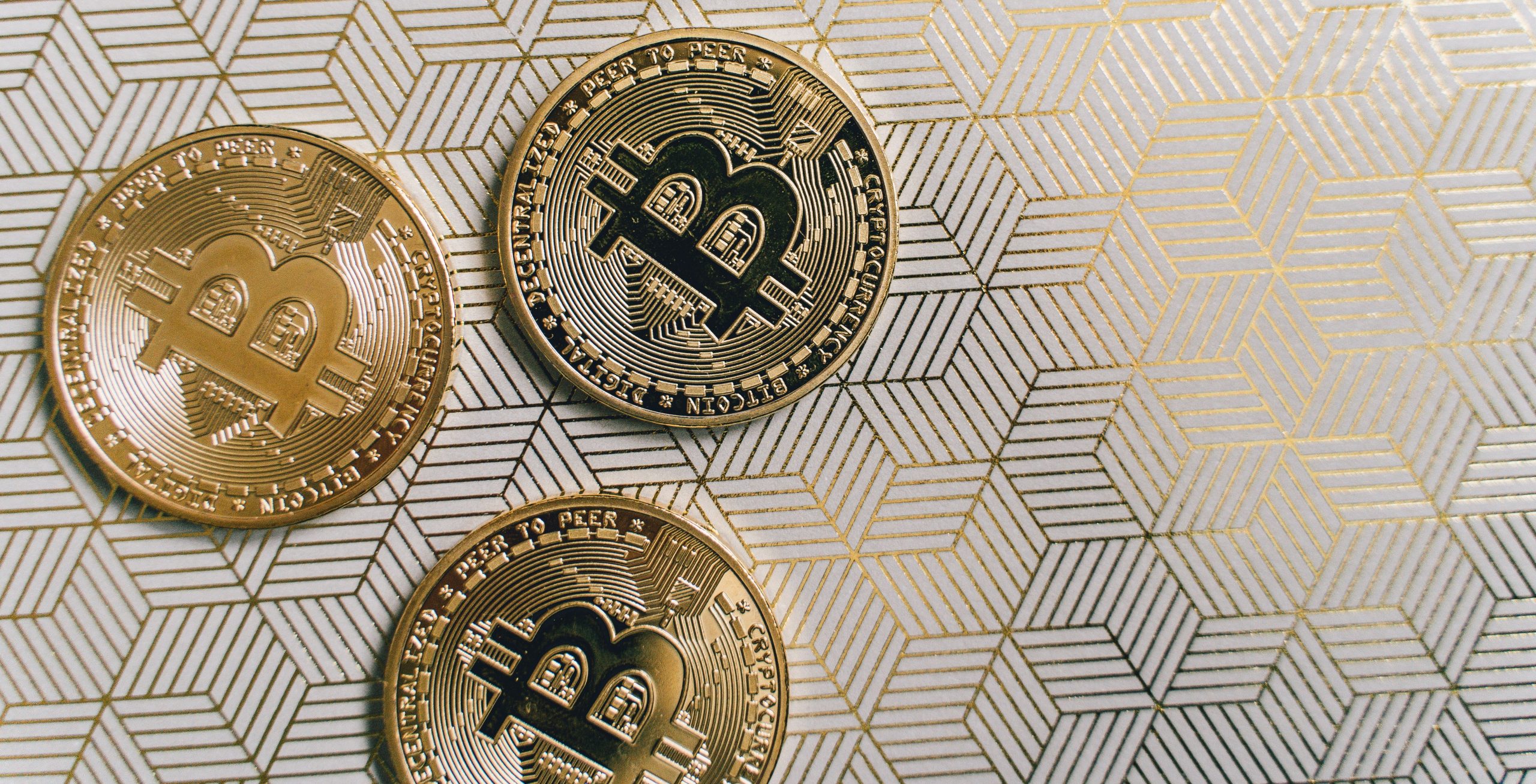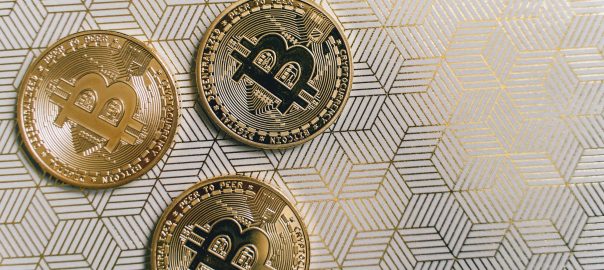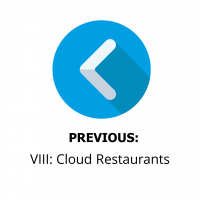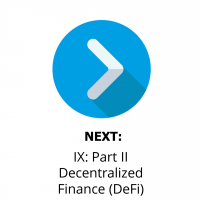These days you have probably encountered with a business or a project that uses tokens as a means of financing. Tokens are the digital currency means by which the so-called Decentralized Finance economy circulates by way of blockchain protocols.
Blockchain itself is complicated enough to understand, so prior to immersing into the basics of tokenized projects, let us try to explain a little about how and why are they possible. What is the best way to eat an elephant?… Piece by piece.
How we got here
The traditional financial system is organized in a centralized manner, and it involves a lot of intermediaries in order to function. It is regulated by centralized bodies that can be governments, central banks, or commercial banks. These bodies also often use your deposits to buy shares, lend money, and make other investments to earn profit and offer a partial amount of these earnings to you as interest. The 2008 financial crisis exposed the problems related to centralization in our traditional financial systems and has encouraged the introduction of a decentralized medium. DeFi, an acronym for decentralized finance, provides an alternative for customers to tackle many of the issues related to traditional finance. These issues range from autonomy to transparency and put the customers in a better position financially. It all started with the introduction of Blockchain and Bitcoin.
[1]Blockchain – is a technology that preserves records and ledgers that occur with any cryptocurrency. Blockchain is a series of information that is stored in ‘blocks’ and tied together through the usage of cryptographic validation to make a ‘chain.’ Every block contains details about the transactions like date, time, and the amount, and it also contains information regarding the people engaging in the transaction. Moreover, to distinguish blocks from one another.
- To distinguish blocks from one another, each block contains a hash. A hash is a unique code that is designed by an algorithm. It can be compared to a serial number of a receipt. The serial number allows you to distinguish between the two, even if they both state the same products being bought at the same time.
- When the transaction is made, the blocks become attached to the pre-existent blockchain and become public knowledge.
- Decentralized applications are leveraged on these blockchain technologies.
[1] Anderson, Alex. DeFi – Decentralized Finance – The Complete Guide (p. 18). Kindle Edition.
Cryptocurrencies– are digital cash independent of banks, for that reason, being called a decentralized currency. They are stored on a digital ledger known as a This blockchain maintains a record of all of the transactions by having a distributed network of people with running computers to verify these transactions.
- When a transaction takes part, the receiving end of it owns the established amount through a private key.
- Decentralization – In a decentralized network, there is no 3rd party that owns your assets.
Now, where does this digital cash comes from? There are two types of supply when it comes to cryptocurrencies.
- Through mining: Bitcoin has only 21 million bitcoins that can be mined in total. A bitcoin is a cryptographic problem that, when solved, turns into one Bitcoin. As of Aug, 2021, 18.77 million bitcoins have been mined, which leaves roughly 2.3 million yet to be introduced into circulation.
- Through minted supplies: The creators of the cryptocurrency decide the maximum amount of supply of that cryptocurrency and produce it on demand.
Just as the world operated under a gold standard, what drives a cryptocurrency’s price is supply (which is scarce when the supply has been maximized) and demand. Cryptocurrencies are considered an asset class. They are also spendable, contrary to what most think. For example, as of 2021, you can pay through Paypal using Bitcoins. You can also buy things with a crypto card that converts cryptocurrency into fiat money.
Bitcoins – the original crypto asset is basically a ledger (its blockchain) that is decentralized because the transactions are recorded in databases on many different computers. That single record (stored across many databases) is secured with cryptography and the computers keep tabs on each other to make sure it hasn’t been tampered with. No single party is in charge, so it’s nearly impossible for someone to go rogue and change the rules that govern the virtual coin. Likewise, even if a government manages to prevent a bunch of computers from supporting bitcoin, the digital asset can continue functioning because other computers on the network retain a full record of transactions and can carry on running the show.
For reasons expressed above, Bitcoin is considered digital gold. It is considered an appreciating asset.
- Ethereum – is the second highest valued cryptocurrency, behind Bitcoin. Highest among all ALTcoins (coins other than Bitcoin). It is also an appreciative asset. It is also a way to buy others cryptos and the way to buy into ICO (Initial Coin Offering) as a crowdfunding platform.
The difference with Bitcoin is that Ethereum is a software platform, meaning you can create softwares and decentralized services (dApps).
Ethereum is so important because it introduced the smart contract technology.
- ALTcoins – are all cryptocurrencies other than Bitcoin. These can be bought with Bitcoin (BTC), Ethereum (ETH), Bitcoin Cash (BCH), LiteCoin (LTC), Ripple (XRP) and Tether (USDT). Tether is a stablecoin, which means it is pegged to the US Dollar 1:1. They usually more volatile than Bitcoin. Every ALTcoin has its own community
DeFi takes this concept a step further. Decentralized Finance systems use blockchains like the Ethereum network, as most of the dApps are connected to it. The computers that provide processing power for Ethereum are rewarded with Ether, which is now the second-most valuable crypto asset behind Bitcoin. Ethereum’s blockchain was created to host programs. Think of Ethereum as a decentralized computer that software developers can make applications (dApps) for, just like iOS or Windows are the operating systems for softwares to run on.
Expanding further, DeFi, enables people to access financial services like investing, lending, and trading without relying on centralized institutions. Such financial services are delivered through Decentralized Applications (dApps). Most applications that call themselves “DeFi” are built on top of Ethereum, the world’s second-largest cryptocurrency platform, which sets itself apart from the Bitcoin platform in that it’s easier to use to build other types of decentralized applications beyond simple transactions. Although there are others like the upcoming Solana.
Decentralized Finance DeFi as an economic sector
Decentralized finance is an emerging ecosystem of financial applications and protocols (programmed projects) built on blockchain technology with programmable capabilities, such as Ethereum and Solana. The transactions get executed automatically through smart contracts (or computer code) on the blockchain, which includes the agreement of the deal, which automatically execute transactions if certain conditions are met. For example, say a user wants his or her money to be sent to a friend next Tuesday, but only if the temperature climbs above 90 degrees Fahrenheit according to weather.com. Such rules can be written in a smart contract.
Simply put and according to Wikipedia: “Decentralized finance (DeFi) is a blockchain-based form of finance that does not rely on central financial intermediaries such as brokerages, exchanges, or banks to offer traditional financial instruments, and instead utilizes smart contracts on blockchains, the most common being Ethereum.” That’s important because centralized systems and human gatekeepers can limit the speed and sophistication of transactions while offering users less direct control over their money. In other words, whoever you are transacting with, you are doing it directly, and not through a centralized institution (bank, exchange, or brokerage). Again, in the DeFi case, the transaction is executed by the smart contract, and not by these intermediators, and is only executed when all the checkpoints in the smart contract are verified by the protocol of these blockchain communities known as Decentralized Autonomous Organizations (DAO). DeFi allows money to flow in and through the internet and program money, it creates digital rights, introduces efficiency, and creates a disruption in the current financial world.
DeFi platforms allow people to lend or borrow funds from others, speculate on a range of assets using derivatives, trade cryptocurrencies, insure against risks, earn interest in savings-like accounts, raise money through crowdfunding, engage in betting and more. Cutting out middlemen from all kinds of transactions is one of the primary advantages of DeFi. DeFi uses a layered architecture and highly composable building blocks.
Decentralized finance has captured only 5% of the crypto space, according to CoinGecko, but it has seen massive growth recently. There was $93 billion worth of DeFi assets in the crypto market as of June 2021, up from $4 billion just three years ago.
How are the transactions verified?
As an incentive for participants to actively participate in transaction validations, there is a way of earning rewards for holding certain cryptocurrencies. The process is called Staking, and it’s a way to also generate gains by which participants with a minimum required balance of a specific cryptocurrency, lock their coins on a staking protocol. The protocol then randomly assigns the right to one of these participants to validate the next transaction and, once the chosen participants validate the transaction, they are awarded some cryptocurrency in return. The reason your crypto earns rewards while staked is because the blockchain puts it to work. Cryptocurrencies that allow staking use a “consensus mechanism” called Proof of Stake, which is the way they ensure that all transactions are verified and secured without a bank or payment processor in the middle. Your crypto, if you choose to stake it, becomes part of that process. This system allows individuals to stake an amount to become validators. Whenever a new block is created, a validator is selected to validate the transaction on their node. If this process is successful, then the node is rewarded. When compared to traditional finance, they play the role of the bank.
Tokens into a business context
A project creates tokens in the context of a specific business model so that it can encourage user interaction and distribute rewards among its network’s participants. These tokens have several uses, but they can be divided into security tokens and utility tokens:
- Security tokens are similar to traditional shares because their value is derived from a tradable external asset. They are issued in Initial Coin Offerings (ICOs) and, once regulators and governments decide on a regulatory framework, they will most likely be treated as regular securities.
- A utility token grants its holders access to a company’s future product or service before it can be delivered, much like when a bookstore accepts pre-orders for a book that’s yet to come out. Because their value isn’t directly associated with ownership, these tokens could also be exempt from the laws that will probably be applied to their security counterparts. They can be a popular fundraising method where a company bypasses traditional institutional investors and venture capitals by going straight to its customers.
Difference between a Cryptocurrency and a Token
A cryptocurrency is a digital currency that uses cryptography to secure and verify its transactions, recording them in a decentralized and immutable ledger known as blockchain.
- They can be used as a medium of exchange or a store of value and are traded in many exchanges around the world.
Cryptocurrencies can be divided into two categories:
- those that are supported by their own blockchains, like Ethereum and Bitcoin (BTC)
- and those that are built on top of other blockchains, also known as tokens.
A token is a unit of value issued by an organization, accepted by a community, and supported by an existing blockchain. Tokens are merely a subset of cryptocurrencies which are built on top of other blockchains. Tokens power the network of a said project. For example, when you go to an arcade room, you pay with tokens. These tokens are not valued the same as the fiat currency they were exchanged, instead they have their own value. So, in order to belong to a network, you need to acquire the token it operated in.
In simple terms, a cryptocurrency operates independently and uses its own platform, a token is merely a cryptocurrency built on top of another pre-existing blockchain. All tokens are cryptos, but not all cryptos are tokens.
Token transactions using blockchain
INITIAL COIN OFFERINGS (ICOs)
- ICOs are a type of crowdfunding, and they’re often used to raise money for open-source software projects. In exchange for capital, ICO investors get a unique token that might give them access to the software’s special features
NONFUNGIBLE TOKENS (NFTS)
- NFTs are kind of like a limited-edition trading card—only online. Just as blockchain enables users to prove ownership of their bitcoin holdings, so too does it enable people to make unique digital assets like collectibles and art. Some examples of these transactions: https://decrypt.co/62898/most-expensive-nfts-ever-sold.
- NFT market is just staring, sectors like gaming will be benefitting plenty from this disruption. Imagine that Neymar designs his own shoes, exclusively for FIFA (the videogame), on a limited or exclusive edition. Those shoes can sell for hundreds of thousands or even millions. Players would acquire them using the game`s digital currency (FUT). In order to be limited, and not hackable, it uses a cryptographic transaction (hence the blockchain).
ICOs gave startups and software developers a way to raise money without the help of an investment bank or the backing of a venture capital firm. Likewise, NFTs can give musicians and visual artists a new way to monetize their work.
This article was written by José Ramírez Terc, specialist in 21st century business models.
About ONEtoONE
Our company, ONEtoONE Corporate Finance, is specialized in international middle-market M&A advisory. We are continuously focusing on improving the techniques to achieve the best possible price for our clients, and we also advise on acquisitions, strategic planning and valuation. We are pleased to give our opinion about company valuation or other aspects of a possible corporate operation. If you need an advisor while buying or selling a company,
contact us.








